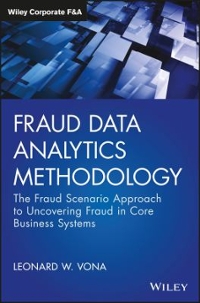The picture 1,2,3 are information from question which is given. The picture 4,5,6 are my complete work. I had problem with second requirement under the inventory reduction assumption. Since the beginning and ending work in process is given, the manufacturing cost for the year has to be exclude the beginning work in process balance, but I can't make the units t-account and cost t-account coordinate. I also don't really understand the 25% complete in work in process account, I just ignored it to depict the cost flow, but I found it work under the Status Quo. So I am totally lose in the inventory reduction assumption. Could you please check my t-account for depict cost flow, which is the picture 5.
Standard costing is used for planning and control purposes, and Jamie documented the following baseline assumptions for 2018: Standard costs are based on a denominator level of 20,000 units (10 bags per unit). 1.] million yards of raw material will be purchased at US$2.50 per yard. No purchase price, material usage, or spending variances are expected. Direct labor and manufacturing overhead are expected to be xed within a production range of 15,000 to 22,000 units. Units are expected to sell at an average wholesale price of US$320. 20,000 units will be manufactured, and 17,000 will be sold. The manufacturing and inventory assumptions are documented in Exhibit A (under the \"Status Quo\" scenario). Operating expenses are expected to be US$1,785,000 (excluding interest expense). Additionally, Jamie is considering inventory reductions to reduce working capital and fund future expansion. This effort would create the following changed assumptions: 16,000 units will be manufactured, and 17,000 will be sold. These manufacturing and inventory assumptions are documented in Exhibit A (under the \"Inventory Reduction Effort\" scenario). 750,000 yards of raw material will be purchased at US$2.50 per yard. . Expected production volume variances are closed directly to cost of goods sold (COGS). ASSIGNMENT REQUIREMENTS 1. Determine the standard cost per unit (10 bags per unit). 2. Complete the shaded portions of Exhibit A. Consider using Taccounts to depict ow of units and costs. 3. Determine the forecasted gross prot and net income for 2018 using the \"Status Quo\" assumptions in Exhibit A. Compute the debt-to-equity ratio as of December 31, 2018, under these assumptions. 4. Determine the forecasted gross prot and net income for 2018 using the \"Inventory Reduction\" assumptions in Exhibit A. Compute the debt-to-equity ratio as of December 31, 2018, under these assumptions. 5. Determine the expected cash disbursements for inventory in 2018 using the \"Status Quo\" assumptions in Exhibit A (assume purchases are paid for in 2018). 6. Determine the expected cash disbursements for inventory in 2018 using the \"Inventory Reduction\" assumptions in Exhibit A (assume purchases are paid for in 2018). 7. Should EcoBags execute its inventory reduction strategy? Document and discuss your rationale. Status Quo Inventory Reduction Effort Spending* Spending Direct materials S 2.50 per yard Direct materials $ 2.50 per yard Direct materials 5. 00 yards per bag Direct materials 5.00 yards per bag Bags per unit 10 bags per unit Bags per unit 10 bags per unit Direct materials per unit 50 yards per unit Direct materials per unit 50 yards per unit Expected purchases 1 , 100 , 000 yards Expected purchases 750, 000 yards Direct Labor* 600, 000\\ fixed Direct Labor* $ 600, 000 fixed Manufacturing Overhead S 900, 000 fixed Manufacturing Overhead $ 900, 000 fixed Denominator Activity Level 20, 000 units Denominator Activity Level 20, 000 units Expected completed production 20, 000 units Expected completed production 16, 000 units Expected sales 17, 000 units Expected sales 17, 000 units Units Units Beginning Expected Ending Beginning Expected Ending* Raw materials ( yards ) 100, 000 Raw materials ( yards ) 100, 000 Work in process ( units - 25% complete ) 500 500 Work in process ( units - 25% complete ) 500 500 Finished goods ( units ) 1. 500 Finished goods ( units ) 1. 500 Cost Cost Beginning* Expected Ending Beginning Expected Ending Raw materials Raw materials Work in process Work in process Finished goods Finished goodsStatus Quo Units : Raw Materials Work - In - Process Finished Goods 100 , 000 1, 000 , 000 500 20, 000 1 , 500 17 , 000 1 , 100 , 000 20, 000 20 , 000 200, 000 500 4. 500 Cost: Raw Materials Work- In - Process Finished Goods 250, 000 2, 500, 000 100 , 000 4, 000, 000 300 , 000 3 , 400 , 000 2 , 750 , 000 2, 500 , 000 4, 000 , 000 600 , 000 900 , 000 500 , 000 100 , 000 900 , 000Inventory Reduction Effort Units :" Raw Materials Work - In - Process Finished Goods 100 , 000 800 , 000 500 16, 000 1 , 500 17, 000 750, 000 16, 000 16, 000 50, 000 500 500 Cost : Raw Materials Work - In- Process Finished Goods 250, 000 2, 000 , 000 100 , 000 3 , 500 , 000 300 , 000 3, 400, 000 1, 875, 000 2, 000 , 000 3 , 200 , 000 600, 000 900 , 000 125 , 000 100 , 000 100 , 000Requirement 1 : The standard cost per unit . $2. 50 / yard 5 yards / bag 10 bags per unit $2.5* 50 = $125 / unit Level of production : 20 , 000 units . Total per unit Direct Materials $ 125* 20 , 000 $2 , 500 , 000 $125 Direct labor $600, 000 $30 Manufacturing $900, 000 $45 Overhead Total manufacturing cost $4 , 000 , 000 $ 200












